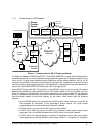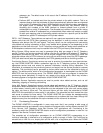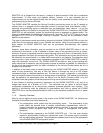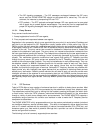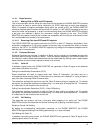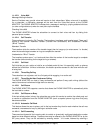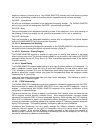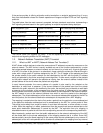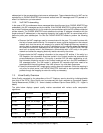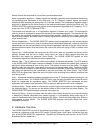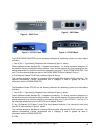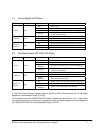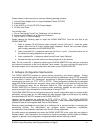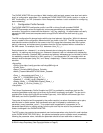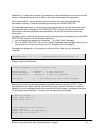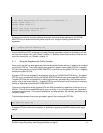
address/port to the corresponding private source address/port. These characteristics of a NAT can be
exploited by an PHONE ADAPTER to let external entities send SIP messages and RTP packets to it
when it is installed on a private network.
1.2.2. VoIP-NAT Interworking
In the case of SIP, the addresses where messages/data should be sent to an PHONE ADAPTER are
embedded in the SIP messages sent by the device. If the PHONE ADAPTER is sitting behind a NAT,
the private IP address assigned to it is not usable for communications with the SIP entities outside the
private network. The PHONE ADAPTER must substitute the private IP address information with the
proper external IP address/port in the mapping chosen by the underlying NAT to communicate with a
particular public peer address/port. For this the PHONE ADAPTER needs to perform the following
tasks:
• Discover the NAT mappings used to communicate with the peer. This could be done with
the help of some external device. For example a server could be deployed on the external
network such that the server will respond to a special NAT-Mapping-Discovery request by
sending back a message to the source IP address/port of the request, where the message
will contain the source IP address/port of the original request. The PHONE ADAPTER can
send such a request when it first attempts to communicate with a SIP entity in the public
network and stores the mapping discovery results returned by the server.
• Communicate the NAT mapping information to the external SIP entities. If the entity is a
SIP Registrar, the information should be carried in the Contact header that overwrites the
private address/port information. If the entity is another SIP UA when establishing a call,
the information should be carried in the Contact header as well as in the SDP embedded in
SIP message bodies. The VIA header in outbound SIP requests might also need to be
substituted with the public address if the UAS relies on it to route back responses.
• Extend the discovered NAT mappings by sending keep-alive packets. Since the mapping is
only alive for short period, the PHONE ADAPTER continues to send periodic keep-alive
packets through the mapping to extend its validity as necessary.
1.3. Voice Quality Overview
Voice Quality perceived by the subscribers of the IP Telephony service should be indistinguishable
from that of the PSTN. Voice Quality can be measured with such methods as Perceptual Speech
Quality Measurement (PSQM) (1-5 – lower is better) and Mean Opinion Score (MOS) (1-5 – higher is
better).
The table below displays speech quality metrics associated with various audio compression
algorithms:
Algorithm Bandwidth Complexity MOS Score
G.711 64 kbps Very Low 4.5
G.726 16, 24, 32, 40 kbps Low 4.1 (32 kbps)
G.729a 8 kbps Low - Medium 4
G.729 8 kbps Medium 4
G.723.1 6.3, 5.3 kbps High 3.8
Please note: The PHONE ADAPTER supports all the above voice coding algorithms.
© 2004 Linksys Proprietary (See Copyright Notice on Page 2)
16



